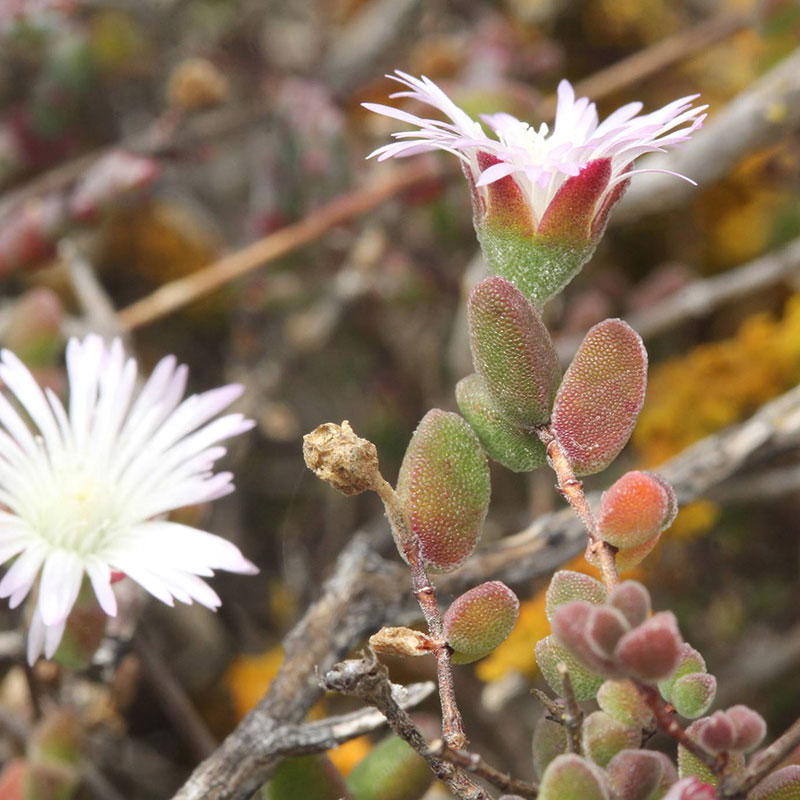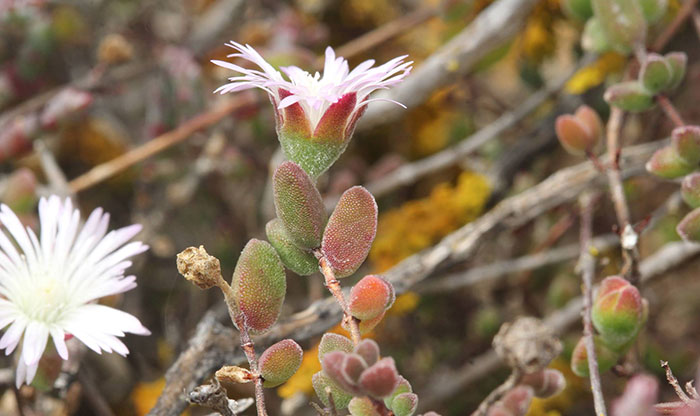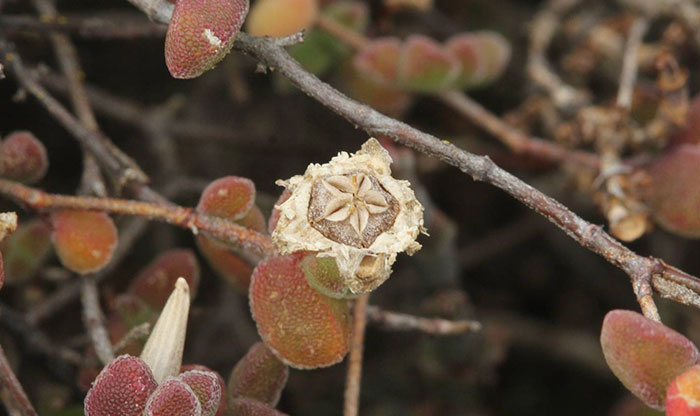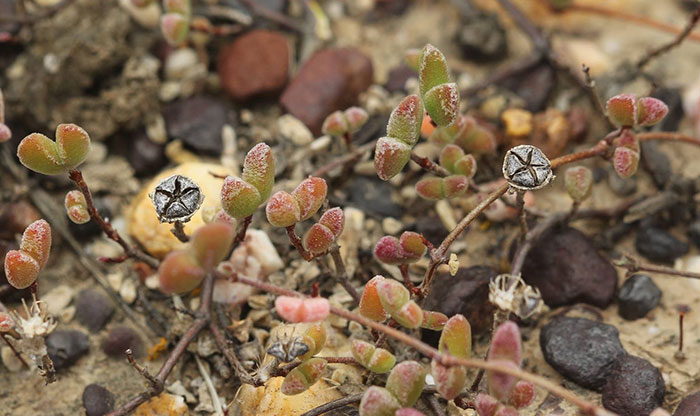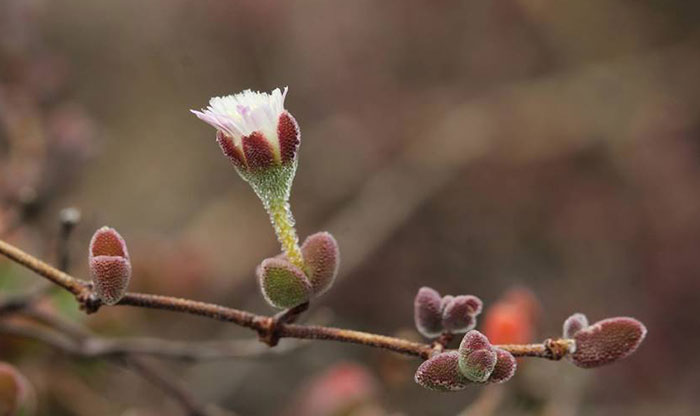With their bright blooms and large shrub-like habit, Drosanthemum are perhaps some of the most well-known of South Africa’s vygies. Also known as dewflowers, they are indigenous to the country’s winter rainfall areas. The genus Drosanthemum forms part of the Aizoaceae family. Many members of the genus are also known as ‘municipal workers’, with their flowers coming into bloom at 9:00am and closing at 5:00pm in the evening.
To the untrained eye, different Drosanthemum species can be challenging to tell apart. Some can only be differentiated by looking at the compartment inside of the seed capsules, also known as locules, under a hand lens. The seed capsules only open when exposed to water, either triggered by rainfall in their habitat or by an eager botanist putting them in a glass of water to solve the mystery of what vygie genus/species they may have encountered.
Like many other plant groups in the Fynbos Biome, we are still learning all the time about the taxonomy of South Africa’s vygie genera. We don’t need to climb the highest mountains or travel to the remotest reaches of the country to discover new species. Sometimes they are right under our noses, with Renosterveld being far less thoroughly explored in the past than the more well-known Fynbos.
A new paper by Klak et al. (2020) describes several new taxa in the genus Drosanthemum, including a new Drosanthemum species found in Overberg Renosterveld. This new Drosanthemum is known as D. overbergense, distributed from the Overberg eastwards to Albertinia on the Garden Route. It was discovered almost simultaneously at two different sites, in the Overberg by the ORCT’s Dr Odette Curtis-Scott and at Riversdale by Peter Bruyns.
Drosanthemum overbergense is relatively similar to Drosanthemum calycinum, but has a number of characteristics that allow it to be differentiated, including smaller flowers. It is a relatively rare species, currently only known from two sites in the Overberg and one near Albertinia. This species grows in relatively wet areas in association with seeps and brackish watercourses in Central/Eastern Rûens Shale Renosterveld and Mossel Bay Shale Renosterveld.
The authors of this study recommend that Drosanthemum overbergense be listed on the Red List of South African Plants as Critically Endangered. This is the most severe threat status that can be assigned to any taxa of conservation concern that still survive in their natural habitat.
It is possible that following on from this research that more populations of Drosanthemum overbergense may be found during botanical surveys. However, the populations that are currently known are highly fragmented and all are found within highly threatened lowland Renosterveld vegetation types.
Findings from this research highlights the importance of allocating resources to continuing botanical surveys and associated taxonomic research to help us better understand the biodiversity treasure chest that is Overberg Renosterveld. Without this work species will continue to disappear from these imperilled ecosystems without us even knowing they exist. To conserve biodiversity we need to be lucky enough to meet these new species.
The Overberg Renosterveld Conservation Trust needs your support to continue their vital conservation work, building biodiversity knowledge about some of the world’s most threatened lowland ecosystems. Please consider making a donation to support their work.
Further Reading
Klak, C. Hanacek, P. Curtis-Scott, O.E. Le Roux, A. Bruyns, P.V. (2020) ‘New taxa in Drosanthemum and a new genus in Drosanthemeae (Ruschioideae, Aizoaceae)’, Phytotaxa (Volume 439): pp. 139-154.

